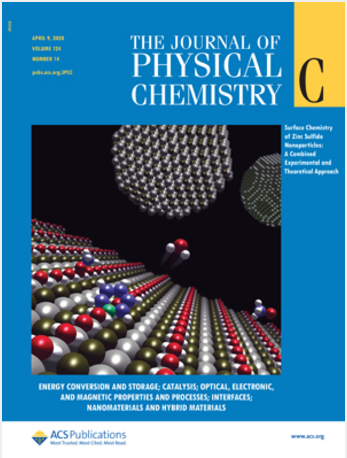Device Performance Improvement of WSe2 Phototransistors Incorporated with CsPbI3 Perovskite Quantum Dots
IF 3.3
3区 化学
Q2 CHEMISTRY, PHYSICAL
引用次数: 0
Abstract
Phototransistors that integrate WSe2 with CsPbI3 quantum dots are fabricated to combine the merits of both materials in photo detecting performances. The hybrid devices demonstrate a substantially enhanced photoresponsivity, reaching up to 10.38 A/W, an appreciable specific detectivity of 7.78 × 1011 Jones, and an external quantum efficiency of 2.43 × 103%. Moreover, the hybridization of the quantum dots does not show any lagging in the photoresponse of the WSe2 devices. To explore the carrier migration in the hybrid structure, we investigated two mechanisms, namely, the direct charge transfer in the photogating effect and the exciton transfer mediated by the Förster resonance energy transfer (FRET) process. The time-resolved photoluminescence (TRPL) spectroscopy is used to analyze the proportion of these mechanisms. The results reveal that the FRET mechanism, which leads to a short fluorescence lifetime in TRPL, dominates the photoresponse in the device. As more layers of quantum dots are spin-coated on WSe2, the photogating effect, which corresponds to a longer fluorescence lifetime, becomes more manifested and consequently delays the photoresponse of the device. This study demonstrates a promising design of a photodetector that combines high responsivity with rapid response speed, through the introduction of quantum dots with high photo absorption, and the FRET mechanism in the heterostructure.

CsPbI3钙钛矿量子点对WSe2光电晶体管器件性能的改进
结合WSe2和CsPbI3量子点在光探测性能上的优点,制作了集成WSe2和CsPbI3量子点的光电晶体管。该混合器件的光响应性显著增强,最高可达10.38 a /W,比探测率为7.78 × 1011 Jones,外量子效率为2.43 × 103%。此外,量子点的杂化在WSe2器件的光响应中没有表现出任何滞后。为了探索载流子在杂化结构中的迁移,我们研究了两种机制,即光门效应中的直接电荷转移和Förster共振能量转移(FRET)过程介导的激子转移。时间分辨光致发光(TRPL)光谱分析了这些机制的比例。结果表明,FRET机制导致TRPL中荧光寿命短,在器件中的光响应中占主导地位。随着WSe2上自旋涂覆的量子点层数的增加,对应于更长的荧光寿命的光门效应变得更加明显,从而延迟了器件的光响应。本研究通过引入具有高光吸收的量子点,以及异质结构中的FRET机制,展示了一种结合高响应性和快速响应速度的光电探测器的设计前景。
本文章由计算机程序翻译,如有差异,请以英文原文为准。
求助全文
约1分钟内获得全文
求助全文
来源期刊

The Journal of Physical Chemistry C
化学-材料科学:综合
CiteScore
6.50
自引率
8.10%
发文量
2047
审稿时长
1.8 months
期刊介绍:
The Journal of Physical Chemistry A/B/C is devoted to reporting new and original experimental and theoretical basic research of interest to physical chemists, biophysical chemists, and chemical physicists.
 求助内容:
求助内容: 应助结果提醒方式:
应助结果提醒方式:


